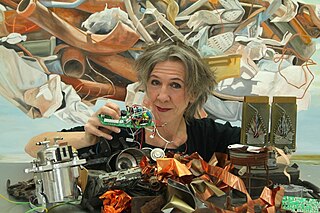
Lower Austria is one of the nine states of Austria, located in the northeastern corner of the country. Major cities are Amstetten, Krems an der Donau, Wiener Neustadt and Sankt Pölten, which has been the capital of Lower Austria since 1986, replacing Vienna, which became a separate state in 1921. With a land area of 19,186 km2 (7,408 sq mi) and a population of 1.699 million people, Lower Austria is the largest and second-most-populous state in Austria.

Sankt Pölten, mostly abbreviated to the official name St. Pölten, is the capital and largest city of the State of Lower Austria in northeast Austria, with 55,538 inhabitants as of 1 January 2020. St. Pölten is a city with its own statute and therefore it is both a municipality and a district in the Mostviertel. Due to its cultural status, it has recently enjoyed an increase of visitors passing through Sankt Pölten on their way to Vienna.

Krems an der Donau is a town with 25,271 inhabitants end 2022 in Austria, in the federal state of Lower Austria. It is the fifth-largest city of Lower Austria and is approximately 70 kilometres west of Vienna. Krems is a city with its own statute, and therefore it is both a municipality and a district.

The market town of Bad Fischau-Brunn is an Austrian municipality in the district of Wiener Neustadt-Land in Lower Austria. It is situated some 50 km south of Vienna at the edge of Viennese Basin.
Ludwig Merwart was an influential Austrian painter and graphic artist. He is an important representative of Tachism and was a major force in graphic arts and prints, especially after World War II. His work belongs to the most significant and interesting contributions to graphic arts in Austria to this day.

Joannis Avramidis was a contemporary Greek-Austrian painter and sculptor. He was born in Batumi, on the Black Sea, in the Adjarian Autonomous Soviet Socialist Republic, an Autonomous Republic of the former Soviet Union, to a family of Pontic Greeks, who had fled the repression of ethnic minorities in the Ottoman Empire in the turmoil leading up to the Greco-Turkish War.

Martina Schettina is an Austrian artist. The main part of her work is Mathematical art.

Edgar Honetschläger is an Austrian artist, filmmaker, environmental activist and is the co-creator of Chickens Suit, a clothing range for chickens.
Thomas Reinhold is an Austrian painter, one of the initiators of so-called “New Painting”.

Renate Bertlmann is an Austrian feminist avant-garde visual artist, who since the early 1970s has worked on issues surrounding themes of sexuality, love, gender and eroticism within a social context, with her own body often serving as the artistic medium. Her diverse practice spans across painting, drawing, collage, photography, sculpture and performance, and actively confronts the social stereotypes assigned to masculine and feminine behaviours and relationships.

Wilhelm Bernatzik was a painter from Austria-Hungary.
Manfred Erjautz is an Austrian artist.
Leo Zogmayer is an Austrian artist, living and working in Vienna and Krems.
Hildegard Joos was an Austrian painter and is known as the "Grande Dame" of geometric abstraction and constructivism in Austria.

Margot Pilz is an Austrian visual artist and a pioneer of conceptual and digital art in Austria. She was one of the first Austrian artists to combine computers and photography. Her works reflect the avant-garde culture of the 1960s and 1970s in their experimental techniques and performative aspects. Her work received renewed attention in the 2010s.
Robert Streibel is an Austrian historian, writer and poet.

Ulrike Lienbacher is an Austrian artist. She works in various media and lives in Salzburg and Vienna.

Maria Temnitschka is an Austrian artist. At the beginning of her artistic career Maria Temnitschka designed and created jewellery and objects made of metal. Later she reoriented to painting - at first abstract, since 2000 figurative representation. Her preferred techniques are oil painting, drawing, experimental photography, object art.
Heidi Harsieber is an Austrian photographer who is known for her independent artistic work and also for her portrait and documentary works of the Austrian art scene.













